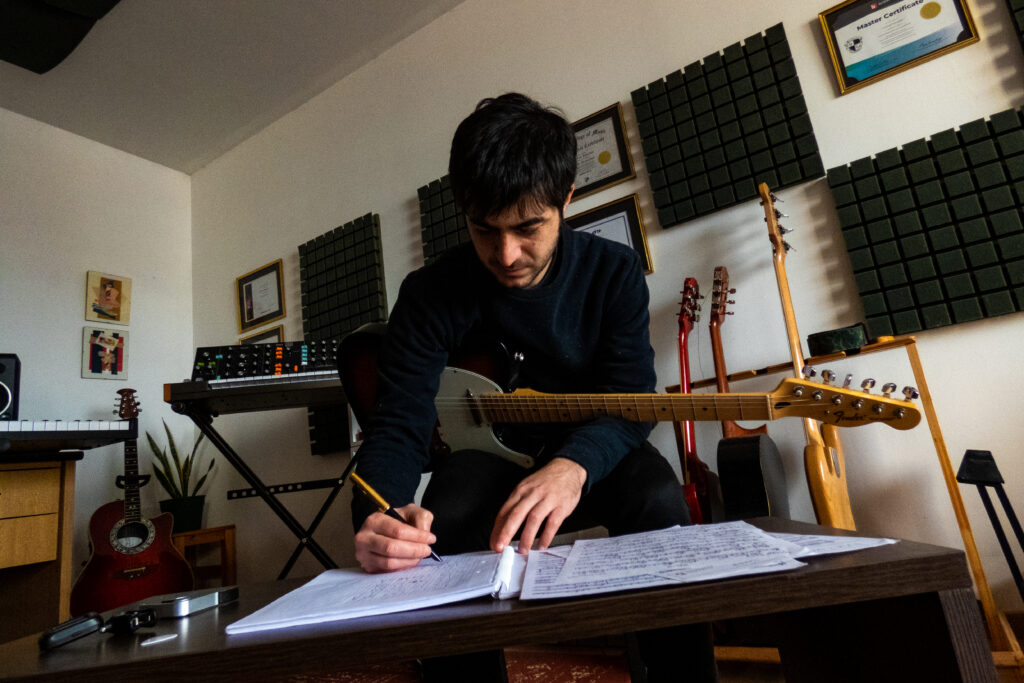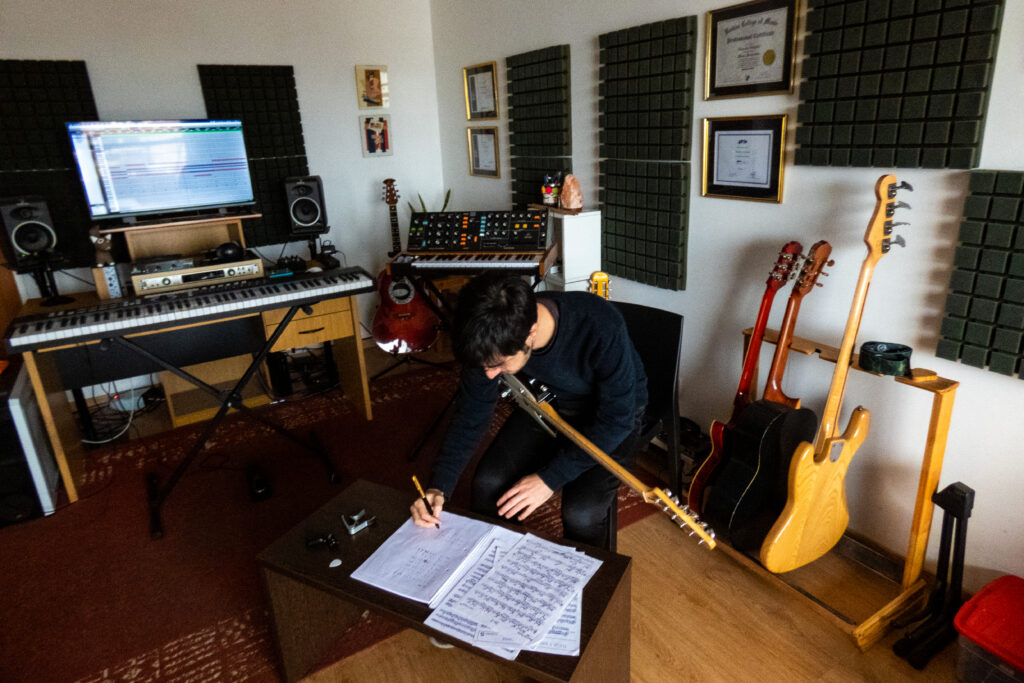Advanced mixing and mastering course.
Learn about the creative musical process that every producer faces in the recording studio.
Being to produce, record, mix and master your own music.
The content of this course can be applied to Pro Tools, Cubase, Nuendo, Ableton Live, LogicPro, Studio One, Digital Performer, FL Studio, Reason, Reaper and other DAWs.

ADVANCED MIXING AND INTRODUCTION TO MASTERING (Level 2 – Intermediate / Advanced)
This Course is designed for musicians in general, students, producers, DJs, that are already working with a DAW and are also familiarized with the basics concepts of the Mixing Process, and wish to go deeper into this in order to achieve more professional audio results. This is also the perfect and recommended continuation for the Recording and Mixing (Level 1) Course. Students from everywhere around the globe are welcome to participate. You will need a computer at home with an already installed DAW for practicing, good internet connection is also recommended.
During these 8 lessons we will present you theoretical and practical concepts for the purpose of taking our Mixes to a next level and being able to pay attention and work with the small details that really make the difference a lot of times. We will expand our knowledge about Compression, EQ, the use of Send FXs, Automations, special treatment for Vocals, Drums and other specific elements of our Mix. We will also take a look at different Mixing styles for different music genres and introduce the process of Mastering, including its main audio tools.
We will analyze different professional mixes and you will also get the possibility of mixing several songs at home, in order to apply the concepts that you will learn during the lessons.
By the end of this Course you will be able to analyze better your mixes, achieve a better sound compatibility with other audio systems, develop your critical ears, applying new processing tools on your tracks, being more efficient in the use of Compression, EQ, dynamic processing FXs and with the treatment of important elements such as your Vocals or Drums. You will also understand more about the Mastering process and you’ll be able to start applying all these Mastering tools in your own works.




Reviews about my courses
A detailed Syllabus for this Course can be checked here in this page.
ADVANCED MIXING, LEVEL 2 – SYLLABUS
Lesson 1: Taking Organization to a next Level
- Color Coding techniques
- Working with markers
- Groups and Sub-mixes
- Creating Tempo Maps
- Advanced Editing Tools
- Warp Audio / Elastic Audio functions
Lesson 2: Compression (special uses) and other Dynamic Range Processors
- Compression parameters
- Parallel Compression. Concepts and new ideas
- Stereo Bus Compression and Sub-Mixes
- Gates. Parameters and uses.
- Side Chain / Key Input effects. Side Chain Compression. Side Chain Gating.
- De-essers. Concept, ideas and uses.
- Exercise: Mixing work
Lesson 3: Delays and Time Based Effects
- Use of Buses, Sends and Returns
- Special uses for the Delay effect. Stereo Widening. Artificial Double Tracking. Slap Delays.
- Time-based Delays and Echo effects
- Delay Parameters and plugins
- Delay types. Mono vs Stereo delays. Ping Pong Delay.
- Modulation function and Time-Based effects. Working with Chorus, Flangers and Phasers.
Lesson 4: Vocal Production
- Concepts of Vocal Production
- Vocal Editing techniques
- Vocal Comping
- Vocal Mixing: Balance, EQ, Compression and Automations
- Other vocal FXs. De-essing techniques. Auto-tune. Saturation and Distortion.
- Vocal Send FXs: Reverbs and Delays.
- Exercise: Mixing work
Lesson 5: Drums and Rhythm Section
- Drums Production. Concepts and main ideas.
- Preparing the Drums for Mixing.
- Fixing Phase issues. Editing. Groups and Sub-Mixes.
- Individual Processing. Stereo and Parallel Processing. EQ, Compression, Gates, Parallel Compression, Saturation and others.
- Drum Triggers. Sampling and Sound replacements.
- Reverbs and other effects.
- Working with Real Drums vs Electronic Drums.
Lesson 6: Other Instruments and effects
- Auto-Tune effect. Uses and techniques.
- Pitch shifting effects.
- Noise reduction processing. De-click, De-Noise, Spectral Repair. Offline / Audio Suite and standalone functions.
- Chorus, Flanger, Phaser
- Distortion, Saturation, Virtual Amps and analog equipment emulation plugins.
- Mixing the Bass. Concepts and ideas
- Mixing Electric and Acoustic Guitars
- Mixing Strings and other instruments
- Exercise: Mixing work
Lesson 7: Mixing styles and Music genres
- Concepts and ideas for Mixing Acoustic Music
- Concepts and ideas for Mixing Jazz Music
- Concepts and ideas for Mixing Rock and Pop Music
- Mixing Electronic Music
- Final tips for completing our Mixing work
- Final checks for the Final Mix
- Characteristics of a Final Mix
Lesson 8: The Mastering Process
- The Mastering chain: global concepts
- Volumen meters. Meter types and uses. Peak vs RMS vs LUFS.
- Limiters / Maximizers. Uses and parameters.
- Multi-band Processing. Multi-band Compression. Stereo Imagers. Harmonic Exciters in Mastering.
- Mid-Side Processing. Concepts and ideas. Mid-Side EQ techniques and other effects.
- Dithering and finalizing our Mastering.
- Exercise: 3 songs Mastering work.
Enroll in more than one course and get a special discount!
What is the fee?
For 1 course (Level 1 or 2):
- USD 96 (12% Off)
Before USD 109
For 2 courses (Level 1 and 2):
- USD 139 (37% Off).
Before USD 218
Payments methods accepted
- PayPal
- Debit / Credit card

